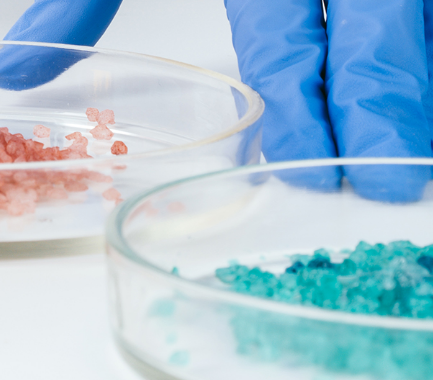Your contact
PENPET-Team - Hamburg

Tim Meister
Sales
Tel. +49 (0) 40 - 675 7 99 40
sales@penpet.de
Get in touch with us.
Dicylopentadiene (DCPD)
Dicyclopentadiene is one of the unsaturated, cyclic hydrocarbons and is an important raw material for the chemical industry. It is formed from cyclopentadiene by the Diels-Alder reaction, whereby two molecules of the basic substance combine to form one molecule of dicyclopentadiene. Industrial extraction is carried out by steam cracking and heating naphtha / petroleum with subsequent fractional distillation.
Dicyclopentadiene is used in the manufacture of various products in the chemical industry. It plays an important role in the production of synthetic resins. The substance is also used in the manufacture of adhesives, paints, rubber, pharmaceutical products and pesticides. Due to its structure, it is also suitable as a starting point for polymerization processes. Tetrahydrodicyclopentadiene can be obtained from dicyclopentadiene by hydrogenation, which together with aluminum chloride forms the starting material for the production of adamantane.
At PENPET you can order dicyclopentadiene as an imported product. Different degrees of purity of dicyclopentadiene are available. We look forward to your inquiry for an individual offer. Deliveries are made in tank containers.
CAS no. 77-73-6
EINECS no. 201-052-9
Molecular formula: C10H12
Synonyms: DCP, DCPD, Bicyclopentadiene, CP dimer, Cyclopentadiene dimer
Application examples: Manufacture of resins, paints, glues, rubber, pharmaceuticals and other organic chemical products
More Information
When it is obtained from cyclopentadiene, two isomers of the reaction product are formed, so that it is present in the forms endo- and exo-dicyclopentadiene. The isomers only differ in the spatial arrangement of their atoms and chemical bonds. However, they have different properties in terms of chemical parameters such as the melting point. As a result, pure endo-dicyclopentadiene is a solid at room temperature, while exo-dicyclopentadiene is liquid. The properties of the mixture can therefore vary depending on the proportion of the components. At PENPET you can order dicyclopentadiene in different degrees of purity to suit your requirements.
Dicyclopentadiene is traded commercially as a liquid. However, the pale yellow to colorless substance is also present as a solid with the highest purity of the endo-dicyclopentadiene isomer. It has an unpleasant camphor-like to terpene-like smell, so that any unintentional escape is easy to recognize. Dicyclopentadiene is practically insoluble in water.
Vapor and liquid of the substance are easily flammable even at low temperatures, so the flash point is 21 °C [please correct me, I found different information]. Explosive mixtures can quickly form with the ambient air at higher temperatures. The substance should therefore be stored at conditions below +30 °C.
In industrial applications, liquid dicyclopentadiene is normally used. Due to its melting range, however, it is also present as a solid or a melt at room temperature. The exact state of aggregation depends on the proportions of endo- and exo-dicyclopentadiene. Moreover, at room temperature, pure endo-dicyclopentadiene gradually reverts to a mixture of both isomers.
At the boiling point, the substance decomposes into the very reactive, monomeric cyclopentadiene, from which it can be recovered by distillation. Butylphenol is used to stabilize dicyclopentadiene.
Dicyclopentadiene is classified as hazardous to health and the environment. It is considered to be acutely harmful to health after oral ingestion. There is also a slight toxic effect in the event of skin contact. Tolerance tests on animals provide indications of the effect on humans. Direct contact and oral intake of the substance should therefore be avoided. To protect against increased intake through breathing air, a MAK value of 0.5 ml/m³ applies in the workplace in Germany, which corresponds to a concentration of 3 mg per cubic meter.
